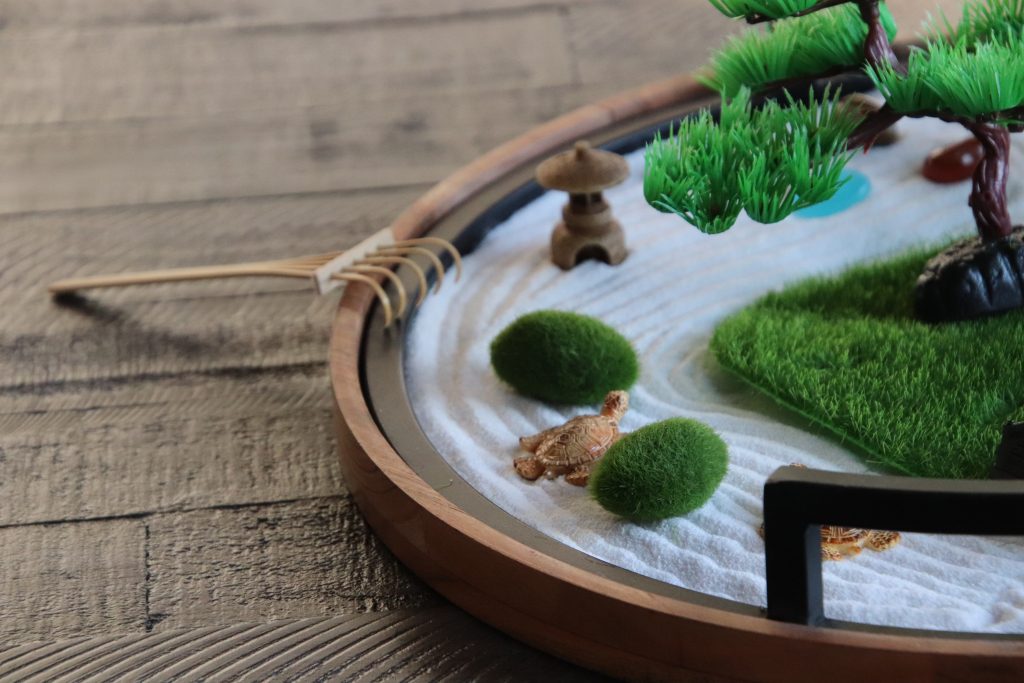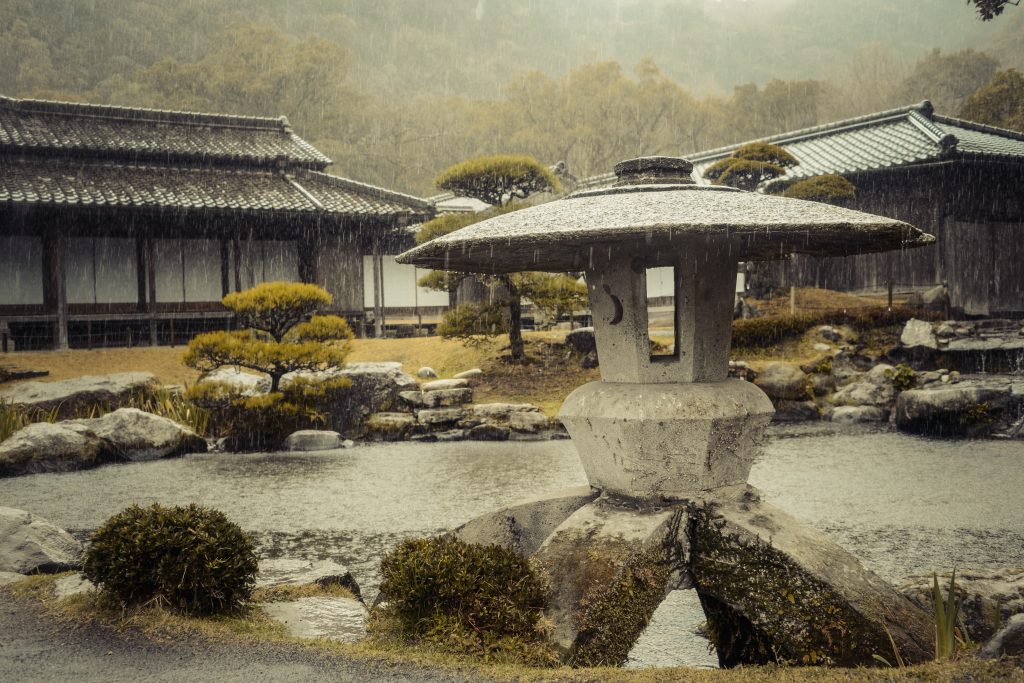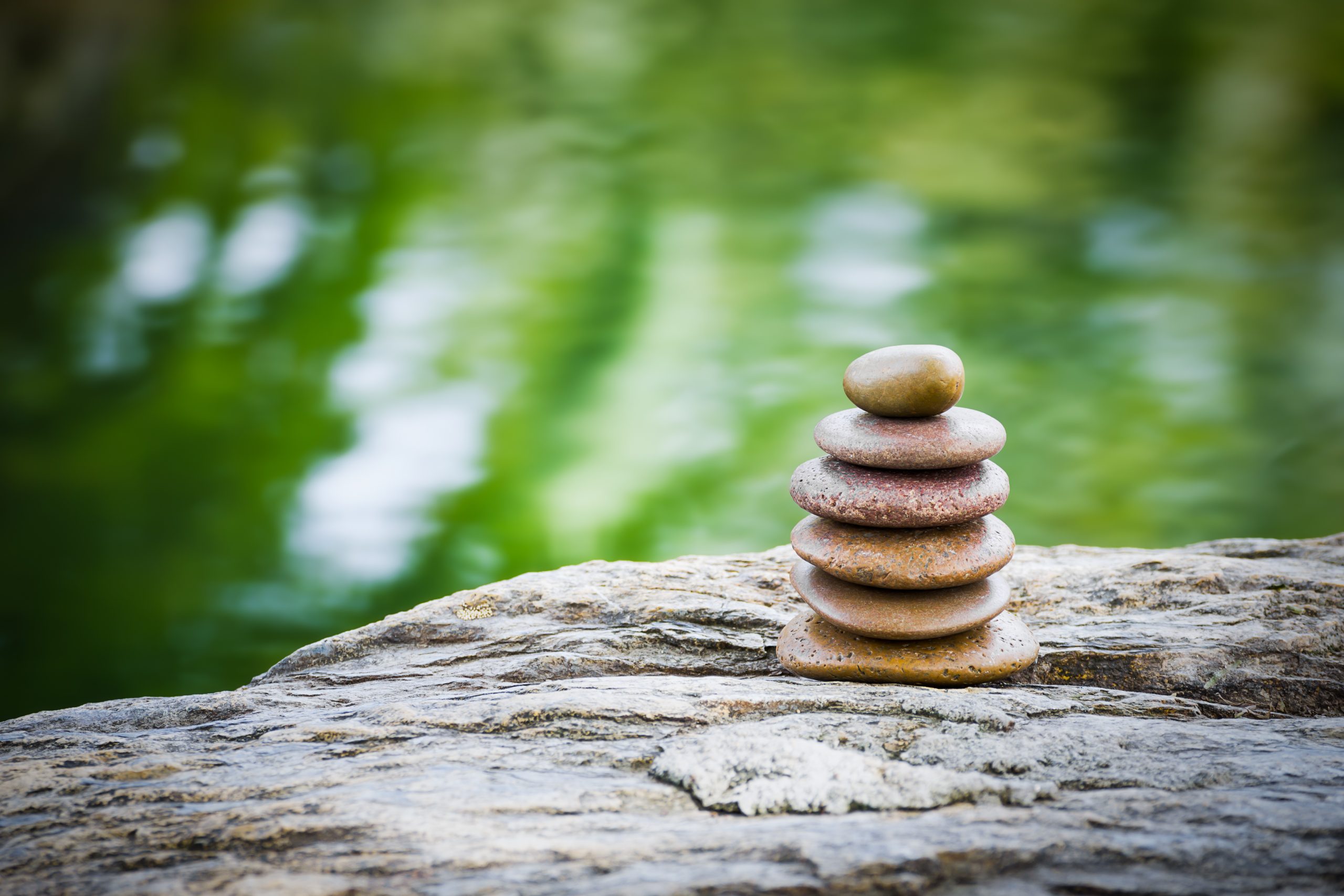Stress and anxiety are a part of modern life, and finding ways to relax and unwind can be difficult. What if you could create your own peaceful retreat in the comfort of your own home? A Zen garden is an ideal way to achieve relaxation, with its calming atmosphere and tranquil energy. In this article, we will discuss how to create a Zen garden for ultimate relaxation. From choosing the right space to selecting natural materials, you will learn how to design your own perfect paradise.
What is a Zen Garden?
A Zen garden is a type of Japanese rock garden that is designed to promote peacefulness and relaxation. It usually consists of stones, sand, gravel, and other natural elements arranged in a way that encourages contemplation and meditation. The traditional design of a Zen garden also includes straight lines and geometric shapes, creating an orderly environment that can help reduce stress and anxiety.
While modern designs may include more curves or softer edges, the overall goal remains the same: to create a calming atmosphere where one can reflect on the beauty of nature. With its ability to bring peace into our daily lives, it’s no wonder why many people are turning to Zen gardens for stress relief. Whether you’re looking to transform your outdoor space or just want to add a meditative element to your office desk, incorporating a Zen garden into your life is sure to make a difference.
Designing Your Zen Garden
Designing your very own Zen garden can be a great way to add a peaceful atmosphere to your outdoor space. While the traditional design of a Japanese rock garden includes straight lines and geometric shapes, there is plenty of creative freedom when it comes to creating your own unique sanctuary. Start by picking out larger rocks that will act as the main elements in the garden. These can be arranged into wavy lines or other sculptural elements, adding interest and texture to the overall design.
Next, incorporate smaller stones and gravel for a dry landscape that will fill in any gaps between the larger rocks. Lastly, add some greenery such as Japanese maple trees or various grasses and shrubs to create an inviting atmosphere. With just these few steps you’ll have an oasis of tranquility right in your own backyard!
Choose the Right Space
Choosing the right space for your Zen garden is essential to creating a peaceful retreat. Start by selecting a spot away from any loud noises or busy areas of your yard, as this will help you create an atmosphere of relaxation. If possible, pick out a spot with views of nature such as trees or water features. This will add to the overall serenity of the space and provide you with a connection to the natural world when meditating.
Additionally, choose a spot that gets plenty of sunlight throughout the day – this will be beneficial for any plants you are incorporating into your design. Finally, make sure your chosen area is large enough for all of the elements in your garden and is accessible from any part of your house so that it can be enjoyed year round. With these tips in mind, you’ll be sure to find the perfect spot for your Zen garden!
Select Natural Materials
When creating a Zen garden, it is important to select natural materials that will help create a peaceful atmosphere. Rocks and stones are the cornerstone of any traditional Japanese garden, and can be used to create an interesting contrast between straight lines and curved shapes. Larger rocks should be placed at the corners of your garden as they will provide stability and structure to the design.
Additionally, adding smaller pebbles or sand to fill in gaps will bring texture to your space. Other natural elements such as plants, such as Japanese maples or bamboo, are also great for adding color and life to your garden. Lastly, consider adding a sculptural element like a birdbath or Buddha statue for visual interest which helps create an inviting meditative space. By selecting natural materials that reflect Japanese culture and design principles, you’ll be sure to craft a tranquil Zen garden in no time!
Utilize Lines and Geometry
Meticulous lines and geometry are essential elements in any Zen garden. While most traditional Japanese gardens will incorporate curved pathways and natural elements, they also rely heavily on straight lines and geometric shapes to create a sense of balance and order. Utilizing wavy lines is a great way to add movement to your garden design – this technique can be used to create pathways, or create the illusion of water flowing through sand. Straight paths should be used for larger areas of your garden, as these will provide structure and direction throughout the space.
Additionally, a grid pattern is often used for smaller spaces such as rock gardens or sand gardens, again providing balance and visual interest without becoming overwhelming. By combining curved and straight lines in equal measure, you’ll be sure to craft an inviting Zen garden that encourages relaxation!
Types of Japanese Gardens
Japanese gardens are renowned for their tranquil beauty and subtlety, allowing visitors to find peace and relaxation in the carefully manicured landscape. There are three main types of Japanese gardens, each with its own unique features that make it distinct from the others.
The first type is a tsukiyama garden. These gardens typically feature small hills and valleys, constructed using soil or rocks to create an undulating landscape. Plants such as maples, azaleas and bamboo are used to adorn the garden’s slopes, while water features like ponds or streams may be used to evoke a sense of tranquility.
Second is the chaniwa garden, which often includes a teahouse and tea ceremony elements. This type of garden will usually contain stone lanterns, stepping stones and bamboo fences – all designed to encourage contemplation and reflection.
Finally, there’s the karesansui style Zen garden which uses sand or gravel instead of plants to create a minimalist design with larger rocks as focal points. This type of garden is believed to promote meditation by encouraging viewers to contemplate its symbolism and meaning through careful study.
Tsukiuama Garden, Hill Gardens
Tsukiyama Garden Hill Gardens are a type of Japanese garden style that feature man-made hills and miniature nature scenes. This type of garden is designed to create a peaceful stroll through winding paths, stone bridges, ponds, streams and flowers. Plants such as maples, azaleas, and bamboo are used to adorn the slopes while water features like ponds or streams help bring tranquility to the environment.
The hills themselves are usually constructed with soil or rocks to create an undulating landscape that enhances its natural beauty. These gardens not only provide a tranquil setting but also allow visitors to explore the symbolism and meaning behind the carefully crafted design. Whether you’re looking for peace from daily life or stress relief from your office desk, Tsukiyama Garden Hill Gardens can be the perfect solution for creating a meditative space in your outdoor space.
Chaniwa Gardens, Tea Garden
Chaniwa gardens, also known as tea gardens, are a type of Japanese garden designed to provide the perfect backdrop for tea ceremonies. These gardens are typically built around a traditional tea house and feature winding paths, stone bridges, ponds, streams and flowers. The paths usually lead up to the tea house which is the centerpiece of the garden. Plants such as maples, azaleas and bamboo are used to adorn the landscape while water features like ponds or streams help bring tranquility to the environment.
Chaniwa gardens are traditionally designed with straight lines and larger rocks in order to create a more sculptural element and evoke a sense of serenity that is so often associated with Japanese culture. Whether you’re looking for peace from daily life or stress relief from your office desk, creating a chaniwa garden can be an easy way to add a peaceful atmosphere to your outdoor space.
Karesansui Garden, Dry Garden
Karesansui gardens, also known as dry gardens or Zen gardens, are a type of Japanese garden that uses natural elements such as gravel, rocks, and other hardscapes like sand and wood to create a tranquil and contemplative atmosphere. These gardens are typically enclosed with a wall or fence to separate them from the outside environment. Karesansui gardens have been around for centuries and usually feature man-made accessories such as bridges, statues, and lanterns.
The most popular element of these gardens is their use of wavy lines which are meant to evoke a sense of movement in the viewer. In addition, karesansui gardens typically feature larger stones than traditional rock gardens as well as more sand than other types of Japanese gardens. When combined with the right plants and accessories, these elements can create an incredibly meditative space perfect for relaxation or contemplation.

What are the rules of a Zen Garden?
Zen gardens, also known as Japanese rock gardens, are a type of landscaping style that emphasizes tranquility and peace. The style is based on the principles of simplicity, naturalness, asymmetry and mystery. These principles help to create a peaceful atmosphere that can be used to reduce stress in everyday life.
When creating a Zen garden, it is important to plan out the layout carefully. Straight lines should be avoided as they are considered too rigid for this style of garden design. Instead curved paths or stepping stones work better to create an organic and calming environment. Plants such as Japanese maples should also be incorporated into the design as they add colour and texture to the garden space. Larger rocks should also be used in order to create visual interest and sculptural elements in the landscape.
Finally, a traditional Zen garden must have sand or gravel which represents water in miniature form. This is essential for creating the desired effect of a tranquil and peaceful atmosphere for daily life and relaxation. With these elements combined with careful planning from a knowledgeable garden designer, you will be able to create an outdoor space perfect for achieving ultimate relaxation through your own personal Zen Garden!
Determine Your Materials
Creating a Zen Garden at home doesn’t have to be an expensive task. You don’t need to invest in expensive materials or landscaping services to achieve the desired tranquil atmosphere for relaxation. The key elements for creating a Zen Garden are natural elements, such as rocks, sand, and gravel; and plants like Japanese maples and bonsai trees.
The materials you choose depend on the size of your garden space and the style you want to create. Rocks can be used to create large sculptural elements or small pebbles used to create intricate shapes. Sand or gravel can be used as a replacement for water in order to create a dry landscape design feature. Finally, plants like Japanese maples can be added for colour and texture.
No matter what materials you decide on, it is important to remember that the layout should be asymmetrical with curved paths and wavy lines – this will help achieve the desired peaceful atmosphere of a traditional Zen Garden. With careful planning and some creativity, you’ll have your very own meditative space in no time!
Designing a Zen Garden in your outdoor space can be a cost-effective and simple way to incorporate peacefulness and serenity into your life. By utilizing appropriate materials, design features, and greenery, you can transform any area into a serene and reflective environment.
Zen Garden Plants
Zen Garden plants are an integral part of any outdoor space that is meant to promote relaxation and serenity. These plants have been used for centuries in Japanese culture as a way to manifest peace and tranquility. Plants that are commonly used in Zen Gardens include Japanese maples, bamboo, ferns, mosses, and succulents.
For an authentic look, it is recommended to incorporate plants with evergreen leaves such as Japanese maples or bamboos that can provide year-round greenery and colour. For added texture and visual interest, smaller plants like ferns or mosses can be planted between larger trees. Succulents are also a popular choice for their minimal maintenance needs and vibrant foliage colours.
When selecting your Zen Garden plants, remember that the goal is to create a peaceful atmosphere – this means avoiding bright colours or overly showy foliage that could disrupt the meditative environment you are trying to achieve. Instead focus on selecting plants with subtle tones and textures that won’t overpower the natural beauty of your garden design.
Cherry Tree
Cherry trees are the perfect addition to a Zen Garden. Their beauty and symbolism make them a powerful tool for manifesting serenity and peace. These iconic trees symbolize both birth and death, beauty and violence in Japanese culture, making them an integral part of any outdoor space meant to promote relaxation. The delicate blooms of these stunning trees will provide your garden with year-round greenery, color, and texture that won’t overpower the natural beauty of your design.
Additionally, cherry trees require minimal maintenance so you can easily enjoy their beauty without having to worry about upkeep! Whether you’re looking to create a traditional Zen Garden or just add a touch of tranquility to your daily life, incorporating a cherry tree is an excellent way to do so.
Japanese Maple
Japanese maples are one of the most beloved trees in Japan and abroad. Their elegant, graceful shape and vibrant colors make them a beautiful addition to any garden space. Not only that, but they have strong cultural significance as well. In Japanese culture, they symbolize both birth and death, beauty and violence.
These trees turn various shades throughout the year – from pale greens in early spring to deep reds and oranges in fall – making them a must-see for visitors from all around the world. Adding a Japanese maple tree to your zen garden is a great way to promote peace and relaxation while also having an element of beauty that won’t overpower the rest of your design. With minimal maintenance required, it’s an easy way to bring tranquility into your life!
Bonsai Trees
Bonsai trees are a traditional symbol of peace and harmony in Japanese culture. These miniature trees are grown in containers and carefully pruned to create an aesthetically pleasing shape. Bonsai trees can add a beautiful, calming element to any garden or outdoor space. They come in various shapes and sizes, so you can choose one that best fits your zen garden design. With the proper care and maintenance, bonsai trees have the potential to live for many years – some even centuries! Not only do they look beautiful, they also provide a meditative experience as you tend to them on a daily basis. Whether you keep it indoors or outdoors, having a bonsai tree is sure to bring an air of tranquility into your life and provide stress relief during our increasingly busy daily lives.
Bamboo
Bamboo is a great addition to any zen garden, as it can create a sense of privacy and seclusion. Bamboo is easy to grow, requires little maintenance, and grows quickly. It’s also incredibly versatile, making it perfect for adding height or creating a natural screen. When choosing bamboo for your garden, be sure to select the right species – some varieties are known to be invasive. If you’re using an invasive variety of bamboo, you should contain it in a planter or raised bed in order to keep it under control.
Once planted, bamboo will add texture and dimension to your zen garden while providing much-needed shade during those hot summer months. Whether straight or wavy lines of bamboo are incorporated into your design, they will add an elegant touch that will help create a tranquil atmosphere perfect for relaxation and meditation.

Conclusion
All in all, creating a zen garden gives you the opportunity to create an oasis of relaxation. Whether it’s as part of your daily life or for an office desk, these gardens provide a peaceful atmosphere and stress relief. Using natural elements such as larger rocks, straight and wavy lines, and Japanese maples, you can create the perfect garden space for yourself. A garden designer can help you plan out the landscape and provide advice on the right materials for the garden. From a traditional Japanese rock garden to a beautiful sand garden, there are many options to turn your outdoor space into a meditative oasis.

